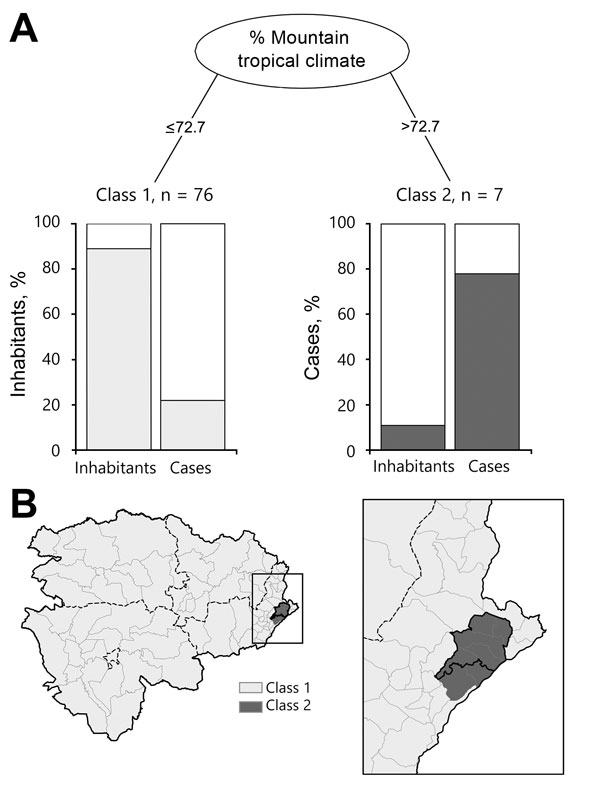Ecologic Features of Plague Outbreak Areas, Democratic Republic of the Congo, 2004–2014
Aaron Aruna Abedi

, Jean-Christophe Shako, Jean Gaudart, Bertrand Sudre, Benoit Kebela Ilunga, Stomy Karhemere Bi Shamamba, Georges Diatta, Bernard Davoust, Jean-Jacques Muyembe Tamfum, Renaud Piarroux, and Martine Piarroux
Author affiliations: Ministry of Health, Kinshasa, Democratic Republic of the Congo (A.A. Abedi, B.K. Ilunga); Plague Reference Laboratory, Bunia, Democratic Republic of the Congo (J.-C. Shako); Aix Marseille University, INSERM, IRD, SESSTIM, Marseille, France (J. Gaudart); UMR 6249 Chrono-environment CNRS/INRA/UFC, Franche-Comté University, Besançon, France (B. Sudre); National Institute of Biomedical Research, Kinshasa (S.K.B. Shamamba, J.-J.M. Tamfum); Aix Marseille University, CNRS, IRD, INSERM, URMITE, Dakar, Senegal (G. Diatta); Aix Marseille University, CNRS, IRD, INSERM, URMITE, Marseille (B. Davoust); Pierre and Marie Curie University, INSERM, IPLESP, Paris, France (R. Piarroux, M. Piarroux)
Main Article
Figure 6

Figure 6. Classification of health zones according to environmental factors related to bubonic plague, Orientale Province, Democratic Republic of the Congo, 2004–2014. A) Classification and regression tree analysis of plague cases determined a significant (p = 0.015) high-risk class of 7 health zones (class 2). Health zones in class 2 have >72.7% of their territory in the mountain tropical climate. The increase in risk for class 2 compared with class 1 was not significant when analyzed with a generalized additive model (incidence rate 1.79; p = 0.14). B) Locations of class 2 zones within Orientale Province. Class 2 zones were grouped in the highlands of Ituri. The cluster determined by spatial scan statistics in the Ituri Highlands ("SaTScan cluster") was composed entirely of class 2 health zones.
Main Article
Page created: January 17, 2018
Page updated: January 17, 2018
Page reviewed: January 17, 2018
The conclusions, findings, and opinions expressed by authors contributing to this journal do not necessarily reflect the official position of the U.S. Department of Health and Human Services, the Public Health Service, the Centers for Disease Control and Prevention, or the authors' affiliated institutions. Use of trade names is for identification only and does not imply endorsement by any of the groups named above.
